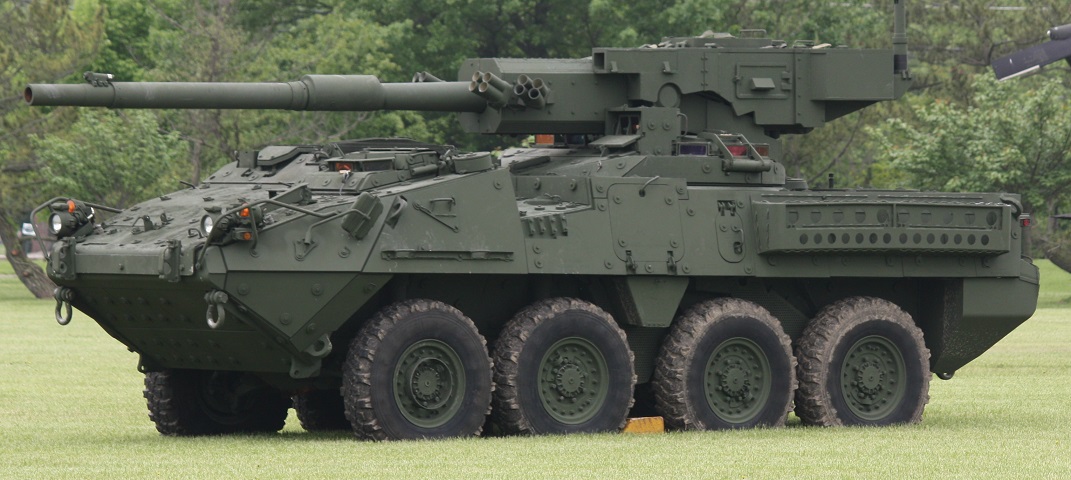
Mobile Gun System M1128 Stryker.

The size of the 105mm ordnance compared to the base vehicle provides an impressive sight. The smoke grenade launchers can be seen at the front of the turret, and the square aperture for the coaxial machine gun is visible behind and above the smoke grenade launchers on this side of the turret. Note the rectangular coaxial machine gun access hatch with an opening for expended casing ejection. The gunner sat to the left of the main gun, and his primary sight housing and hatch hinge are positioned at the base of the turret. Stowage racks were mounted on each of the rear sides of the hull. The hatch in the hull side between the second and third wheels was a crew escape hatch, and the hatch to the rear of this was for access to a pneumatic coupling and power slave receptacle. Behind and outboard of the driver's hatch was the ballistic cover for one of the two fans in the vehicle's ventilation system. Note the absence of the winch and hull nose cable outlet present on other Stryker variants. (Photo by Richard S. Eshleman.)
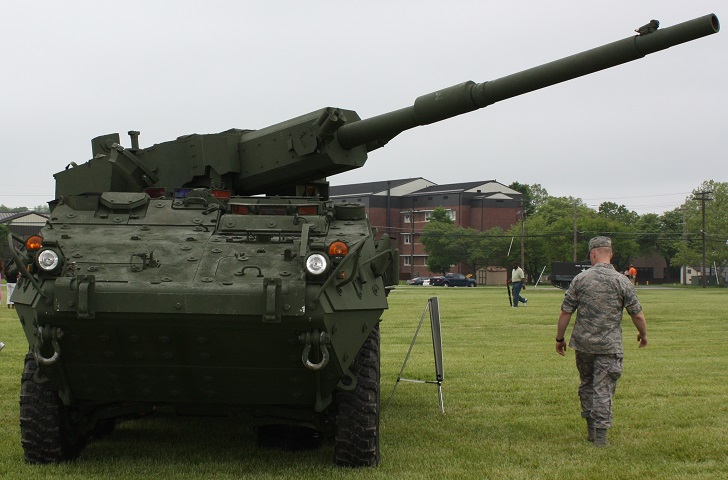
The driver's position at the left front corner of the hull can be ascertained by the location of his periscopes. In front of the driver, under the hatch with the lifting handle, was access to the periscope washer reservoir, the pneumatic and electrical attachments used in vehicle recovery, and the driver's compartment for maintenance. The driver's wire cutter is folded forward for stowage. The 105mm gun had a muzzle reference system fitted that allowed the fire control system to account for barrel droop. The commander's hatch is open on this vehicle, and the single bank of smoke grenade launchers found on the right side of the gun can be contrasted to the two mounted on the opposite side. (Photo by Richard S. Eshleman.)
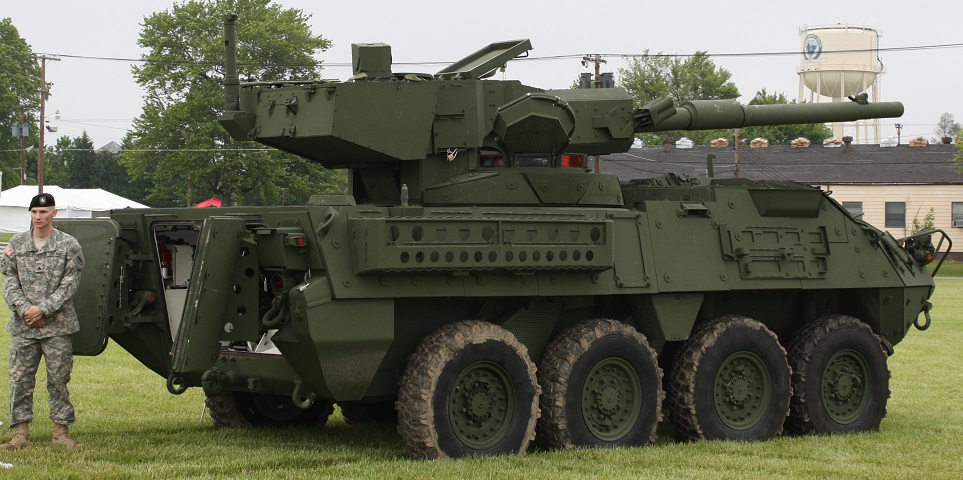
The vehicle commander's hatch is still open, as well as hatches in the turret roof and the hull rear. A crosswind sensor mast stands at the extreme rear of the turret, and the engine's exhaust outlet can be seen high on the hull side between the front two wheels. Just beside the crosswind sensor is a small two-piece hatch through which expended 105mm casings are ejected. A pioneer tool rack is mounted above the two front wheels below the engine exhaust outlet. The stabilized commander's panoramic viewer is also visible on top of the turret, facing away from the camera. This viewer could be manually folded to the rear into the turret for stowage or travel. It offered the commander 4.7x and 9.4x magnification with the daylight channel and 1.7x and 8.6x magnification with the thermal camera. The vehicle's two fuel tanks are mounted at the bottom rear of the hull, behind the rear wheels. A red bottle for the automatic fire extinguisher system can just be glimpsed through the open doors at the rear of the vehicle. The ballistic cover for the other ventilation fan can be seen directly above the lifting eye on the rear hull side. (Photo by Richard S. Eshleman.)
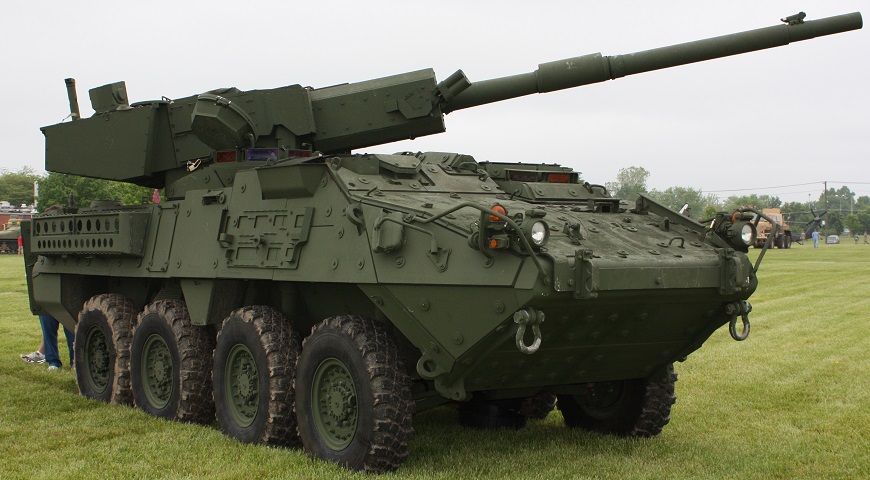
Attachment points for applique armor pockmark the surface of the vehicle. (Photo by Richard S. Eshleman.)
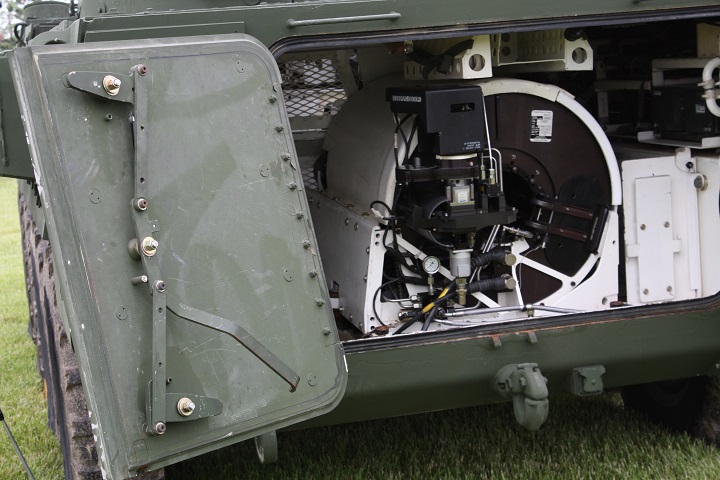
The automatic loader could stow 18 rounds of 105mm ammunition. There was an 8-round ready carousel below the turret, and this larger 10-round replenishment magazine occupied the rear of the hull. On the right of the image, the green embedded training module (ETM) is mounted on the rack on the hull side. The ETM allowed for crew training by generating images on the crews' displays as well as making realistic battlefield sounds. To the rear of the ETM, a curved, white pipe of the M13A1 gas particulate filter unit can be seen. This device was part of the vehicle's NBC protection system. (Photo by Richard S. Eshleman.)
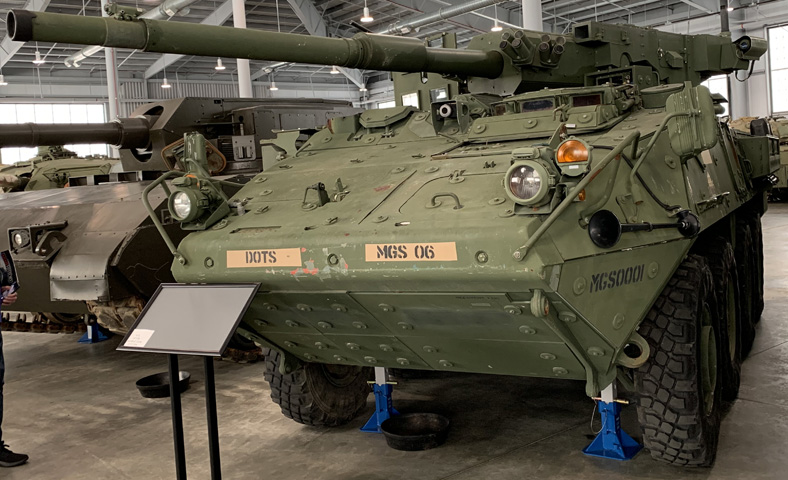
This vehicle possesses later features compared to the one above. The driver was provided with a thermal viewer, and the commander's color situational awareness (CCSA) camera is also visible from this angle. The typical Stryker horn is present on the left front of the hull.
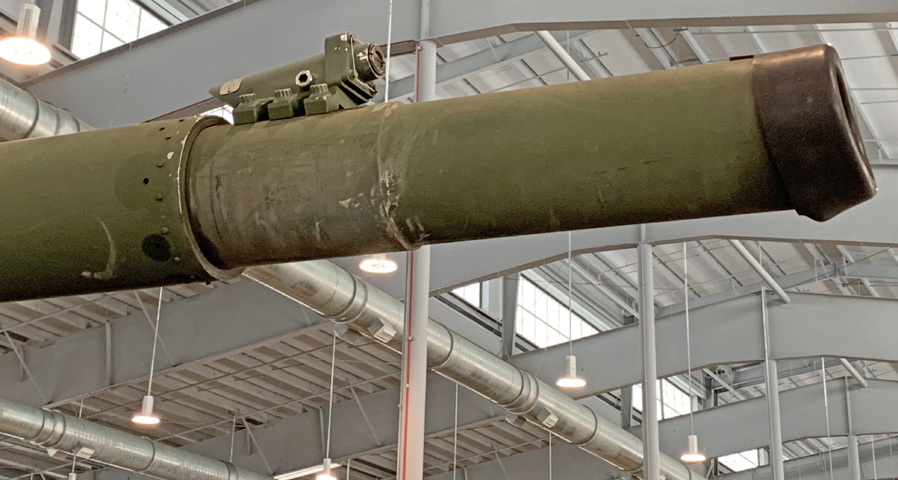
The muzzle of the 105mm gun is protected by a cover. The collimator for the muzzle reference system is mounted atop the gun tube, and the aluminum thermal shroud is visible to the left of the image.
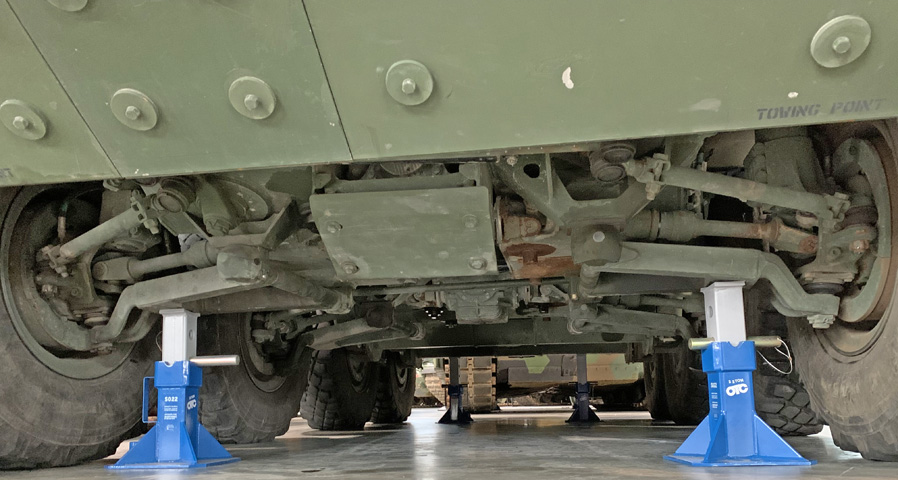
The suspension used hydropneumatic struts that incorporated the action of springs and shock absorbers. The front four wheels were suspended with wishbone assemblies, seen here along with the steering gear and front differentials.
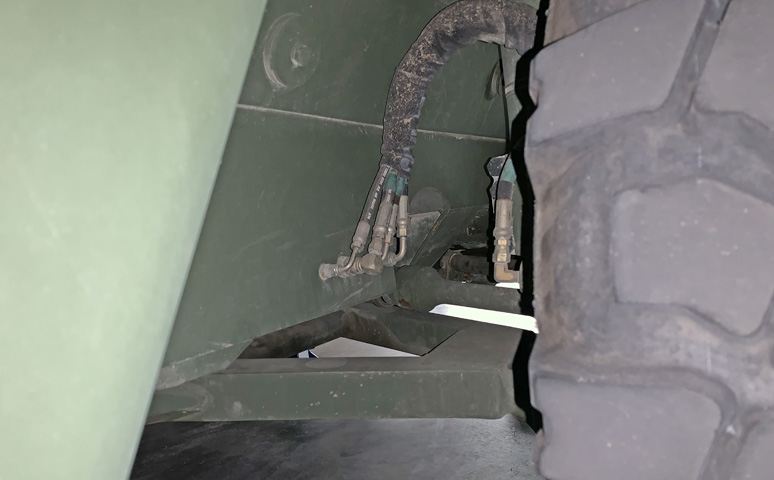
Details of the front left wishbone and the connections to the strut and wheel are detailed in this image.
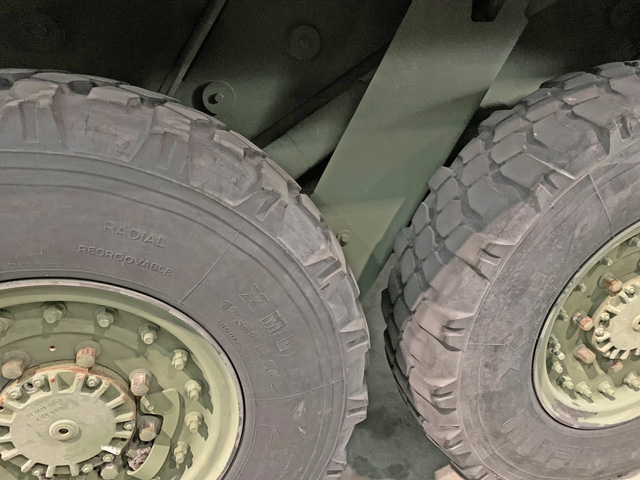
The right rear wheels are seen here. The rear suspension was protected by a guard that angled to the rear.
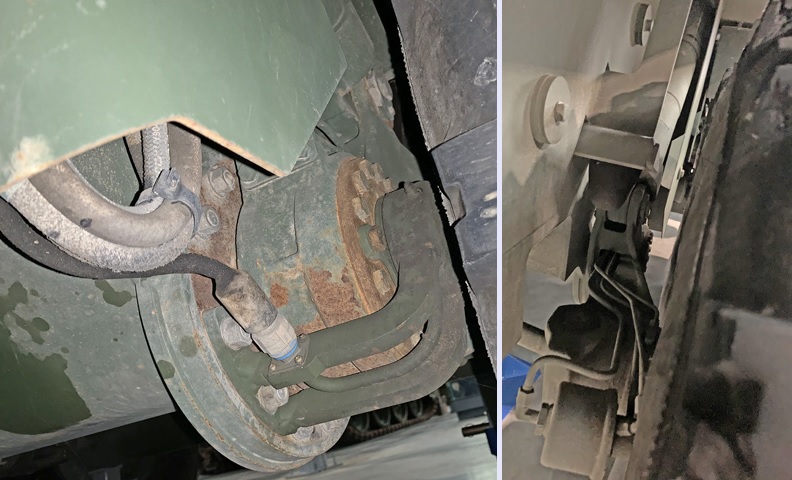
The guard for the rear suspension is visible at the upper left of the image. The rear four wheels were mounted on swingarms, and the front and rear of one are seen on the left and right, respectively.
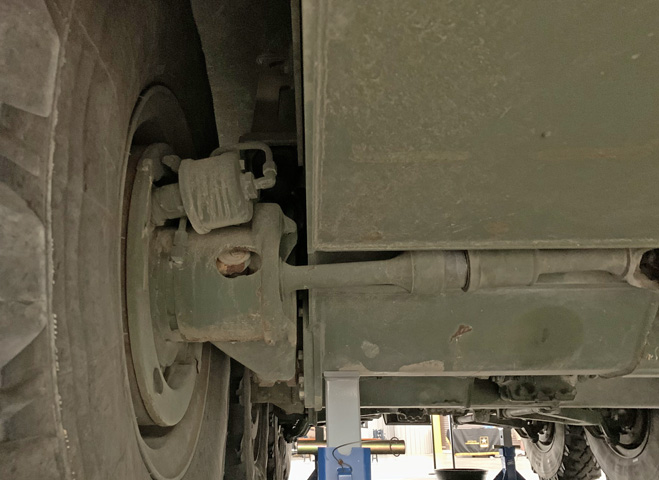
The trailing arm of the left rear wheel can be seen, and can be contrasted to the wishbones of the front wheels visible at the opposite corner of the vehicle.
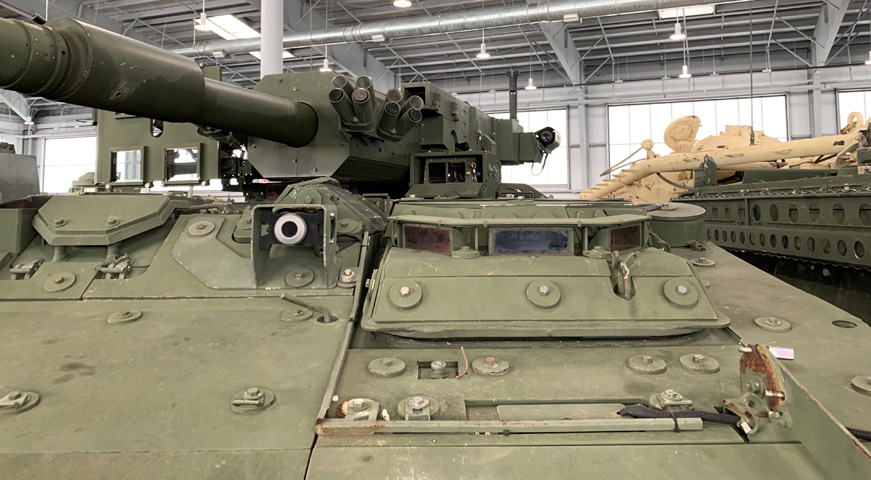
The driver's vision enhancer (DVE) thermal imager was installed to the right of his hatch. The thermal image was sent to a flat-panel display in the driver's compartment.
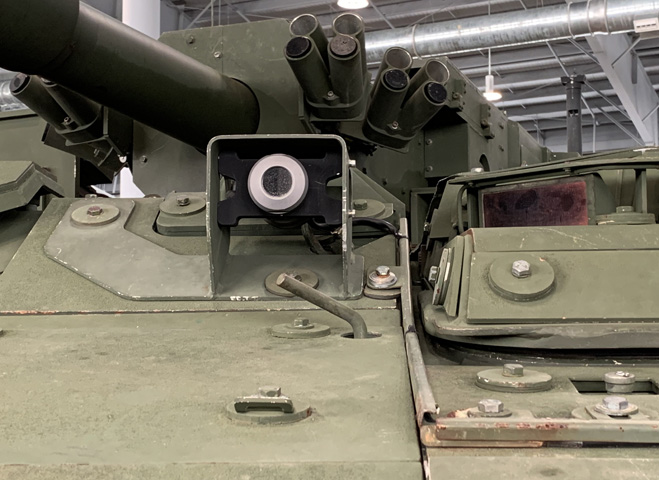
The DVE is isolated in this image. The smoke grenade launchers on the turret are visible in the background.
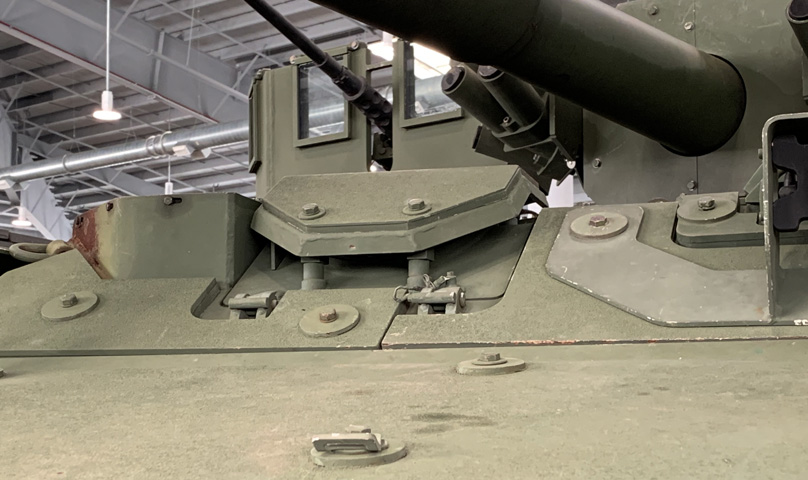
Just to the right of the DVE is a small engine access hatch that doubled as an air intake. The engine exhaust is just outboard of this hatch, and the commander's .50cal machine gun and shield are in the background.
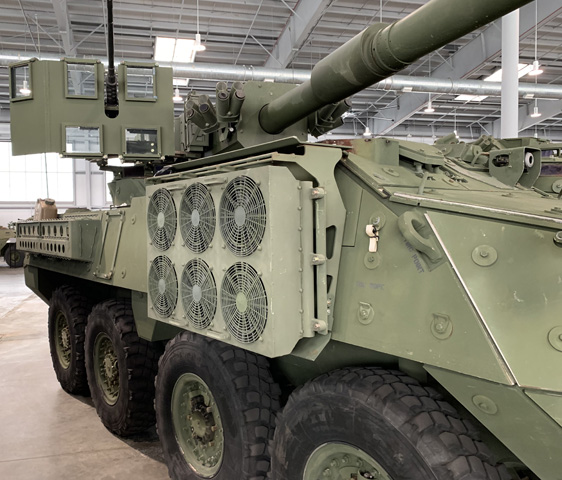
A thermal management system was installed to help cool the vehicle's electronics. A large condenser was mounted on the front of the hull's right side, displacing the pioneer tool rack to the hull roof behind the driver.
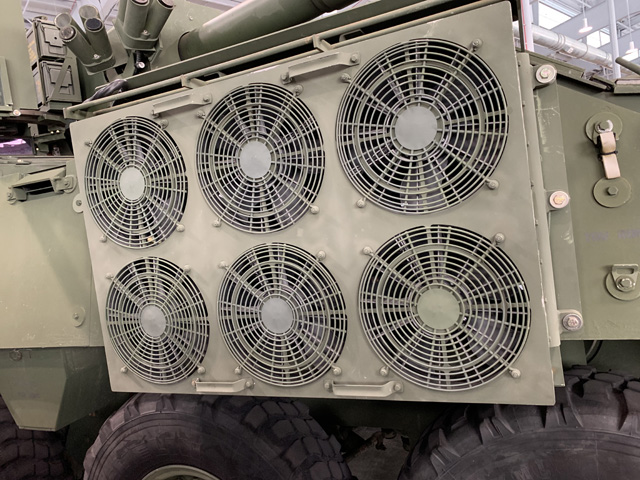
The condenser and its stout attachments are highlighted in this image.
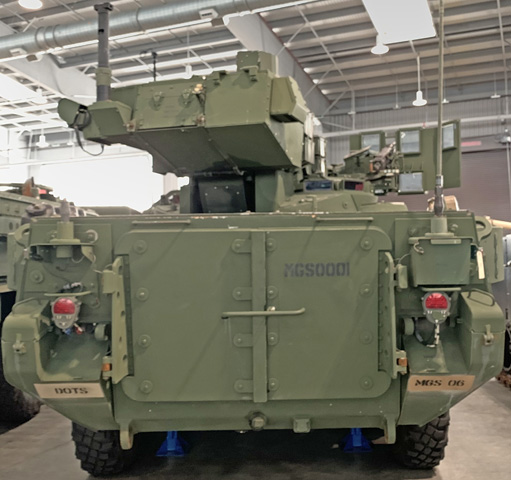
The rear of the vehicle's hull was composed of two outward-opening doors instead of the usual ramp. Antenna mounts are present on the top corners of the hull rear above the taillights.
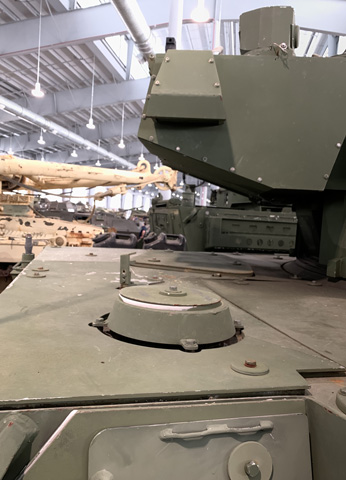
A second ventilation fan was installed in the right rear corner of the hull roof. A hatch providing access to the gun for emergency manual reloading is visible in the opposite side of the roof.
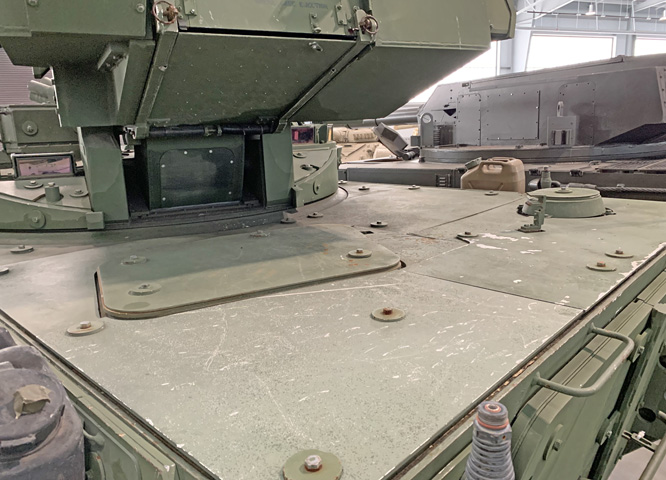
A closer look at the roof hatch for emergency loading of the 105mm gun is provided here.
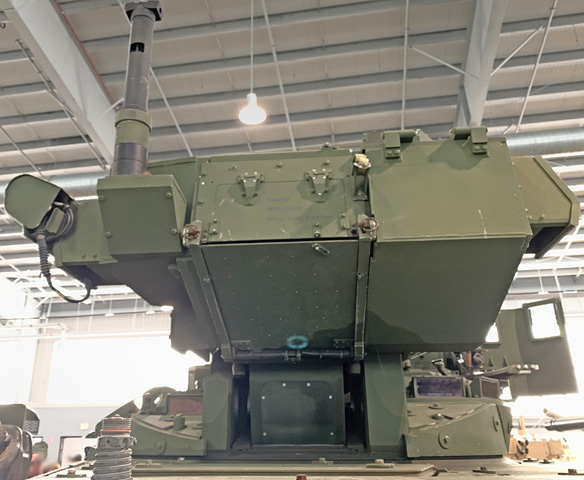
The turret rear is dominated by two doors that opened to allow ejection of 105mm cases. The crosswind sensor could be folded down to the right, and its rest when folded is attached to the turret rear on the opposite side of the top case ejection door.
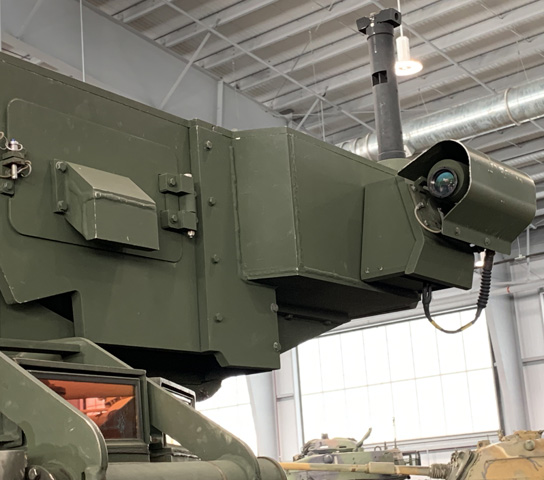
The CCSA was secured to the turret's left rear. Images from this camera were displayed on a monitor at the commander's station. Note the access hatch and ejection chute for the coaxial machine gun in the turret side.
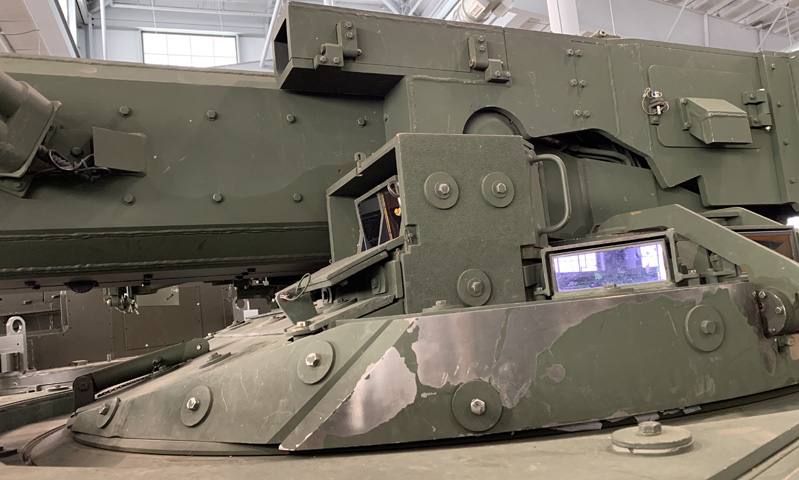
The very low placement of the turret crew is illustrated by this view of the gunner's position. The square aperture for the coaxial machine gun is at the top center of the image, and a downward-hinged access door for the machine gun is visible.
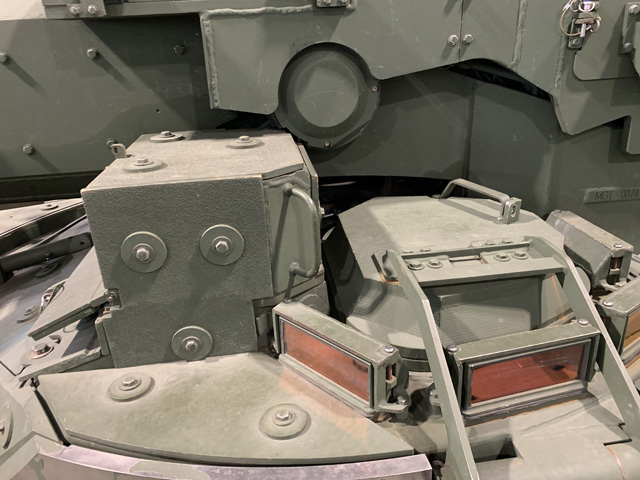
The gunner's hatch opened to the left, and he was provided with four periscopes in addition to the front-facing compact modular sight for the turret.
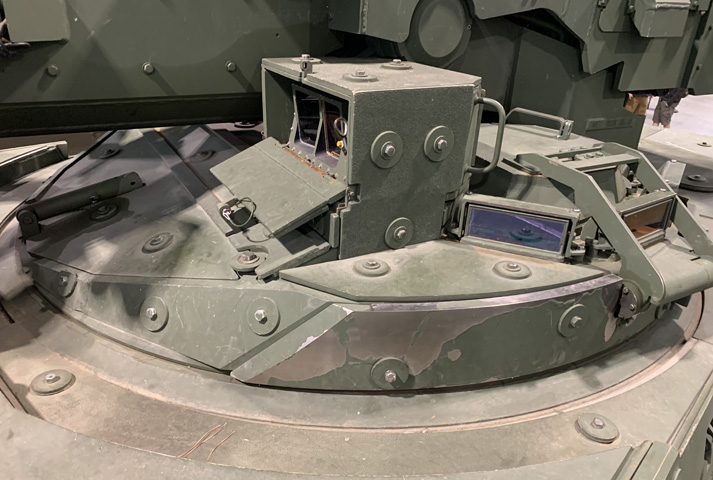
The gunner's Compact Modular Sight provided both daylight and thermal images as well as an eye-safe laser rangefinder. The daylight channel was available in 3x and 8x magnification, while the Hughes Infrared Equipment Sight Assembly (HIRES SA) thermal sight offered 3.3x, 10x, and 20x magnifications. The Commander's Display Unit at the commander's station could show the image from the gunner's sight. The cylindrical gun travel lock is folded onto the turret under the gun.
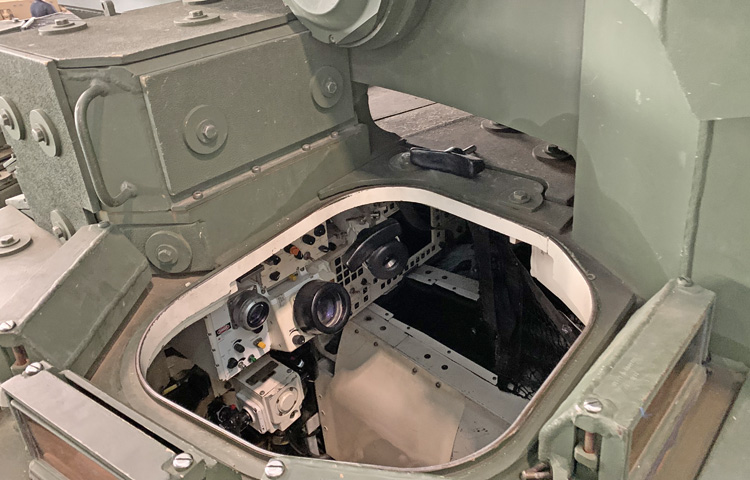
This view into the gunner's position reveals the location of the control handles as well as the daylight, thermal, and auxiliary sight eyepieces. To the gunner's right is the ready ammunition carousel. Early vehicles had similar control handles at the commander's position, but later vehicles replaced these with a smaller, single control handle to the right of the commander's seat.
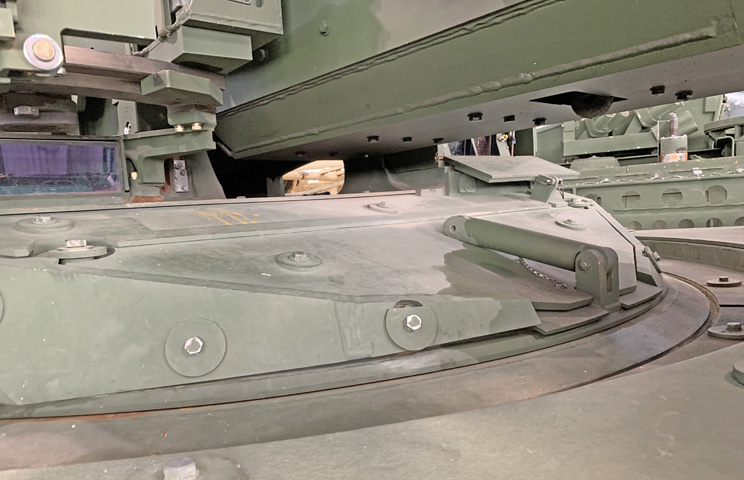
When erected, the travel lock would interface with the loop on the underside of the gun mount.
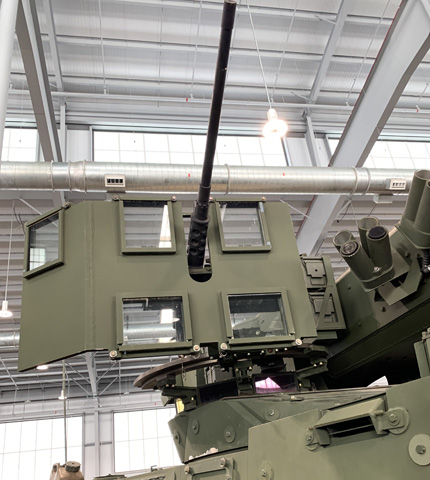
The commander's .50cal machine gun and shield are highlighted in this image. Note that both smoke grenade launchers are mounted on the turret.
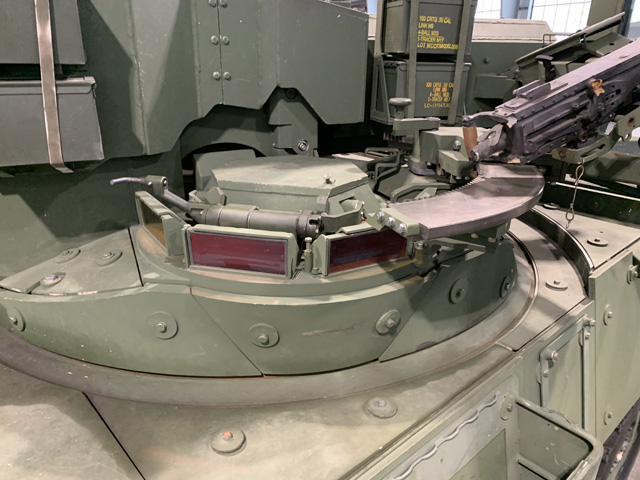
Early vehicles mounted the .50cal machine gun on a swinging arm; the skate mount is a later-production feature. The commander's hatch opened to the right rear, and six periscopes ringed his position.
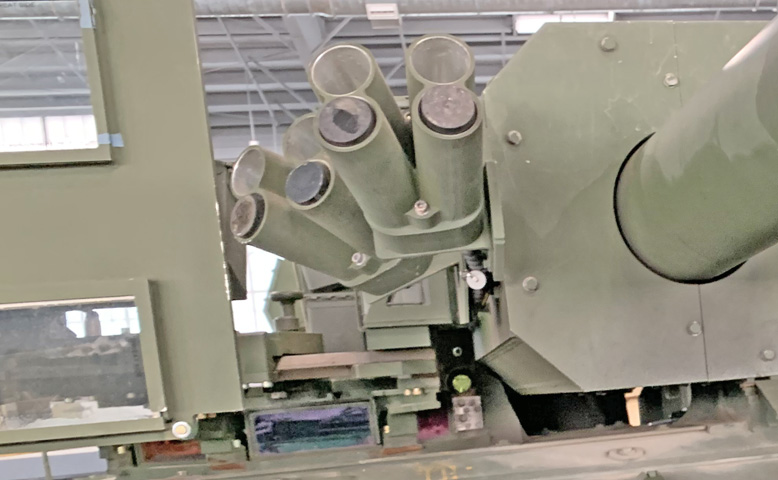
Although largely hidden by shadow, a green reflection is visible from the lens of the Kollmorgen Model 224 auxiliary sight that either the gunner or commander could use if the primary sight was inoperative. It provided 7x magnification.
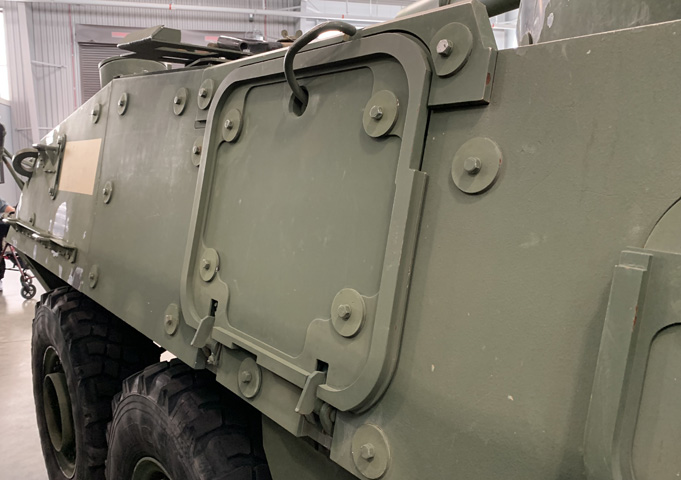
The side escape hatch is central in this picture. The relocated pioneer tool rack is also visible protruding off the side of the vehicle on the hull roof forward of the escape hatch. Note the profile of the hull roof, which has been been straightened compared to the early machine above.
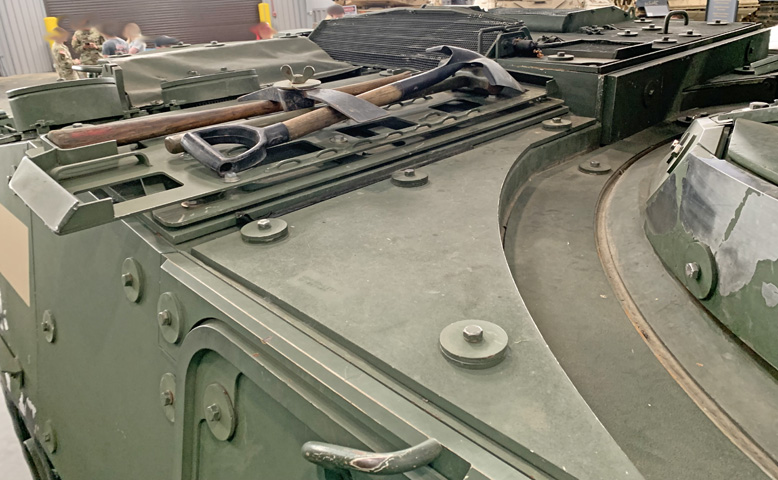
The tool rack was now installed on the forward left corner of the hull roof behind the driver's position.
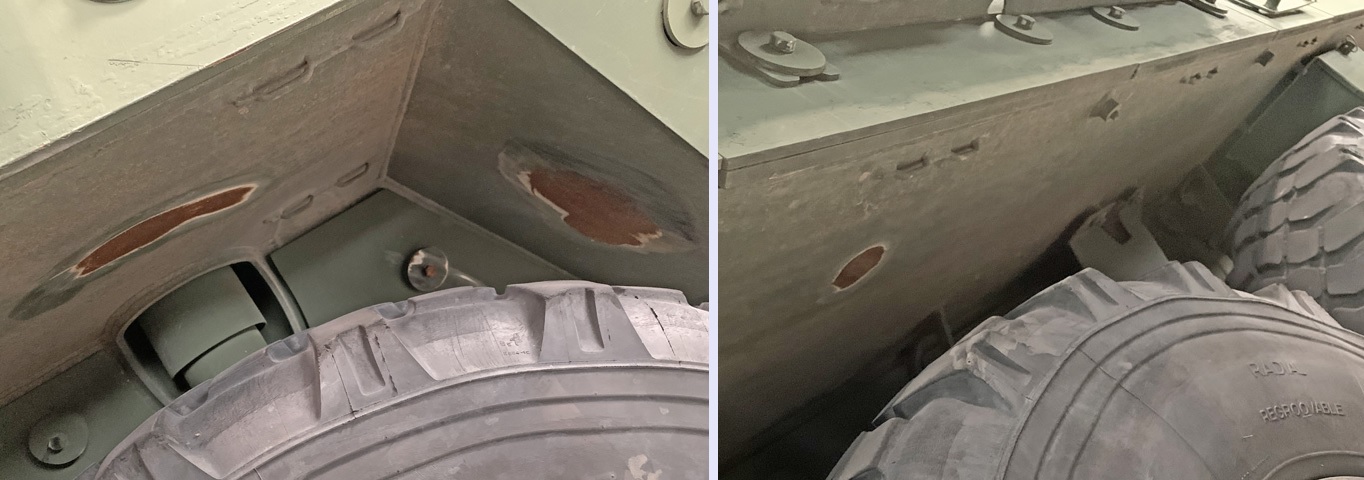
The undersides of the hull adjacent to the wheels shows signs of significant tire rubbing.
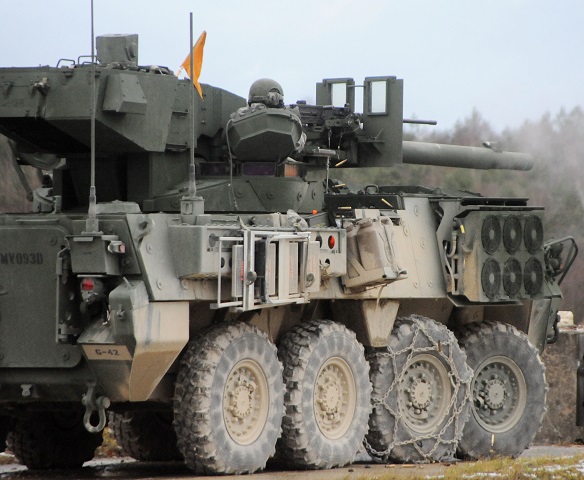
The .50cal machine gun is in use in this image. An infantry phone box is mounted on the hull rear between the right-hand antenna mount and taillight. (Picture taken 8 Dec 2011 by Gertrud Zach; available from Defense Video & Imagery Distribution System.)